For years, retailers have been looking for ways to advertise online that aren’t dependent on third-party cookies. One way that has gotten more traction in the last year is through retail media advertising.
It’s also what United Natural Foods, Inc., a publicly traded wholesale distributor for food and grocery items, has invested in, launching its own retail media network this spring called the UNFI Media Network. It developed the platform with Swiftly, a technology company that powers retail media networks.
Who owns your data?
Third-party data is information about consumers that a retailer or advertiser acquires through an entirely separate source. On the internet, that’s often done through third-party cookies. Third-party cookies are code used on websites that can live on in web browsers across multiple site visits. They essentially track user activity and inform targeted advertisements delivered to those users. Google had planned to phase out third-party cookies, but it recently announced it will not do so.
The intuitive alternative to third-party data is first-party data. First-party data is what retailers and advertisers acquire directly and voluntarily from consumers. It can include an email address or phone number that a consumer uses to sign up for a loyalty program, or the information that a consumer uses to complete a checkout on an ecommerce order. That’s the kind of data that powers retail media networks and advertising.
Both kinds of data allow retailers and advertisers to personalize digital ads based on consumers’ shopping behaviors.
“One of the things that we thought was so important about Swiftly versus other retail media platforms out there is that the retailer retains 100% control of the information and data of that shopper, of that loyalty subscriber,” Louis Martin, UNFI president of wholesale, told Digital Commerce 360. “They don’t have to give that away.”
What is an example of retail media advertising?
Sean Turner, cofounder and chief technology officer at Swiftly, showed Digital Commerce 360 examples of what retail media advertising can look like. Sharing his screen on a web-based call, Turner showed three kinds of personalized ads the UNFI Media Network can display using Swiftly technology.
1. Personalized pricing promotions
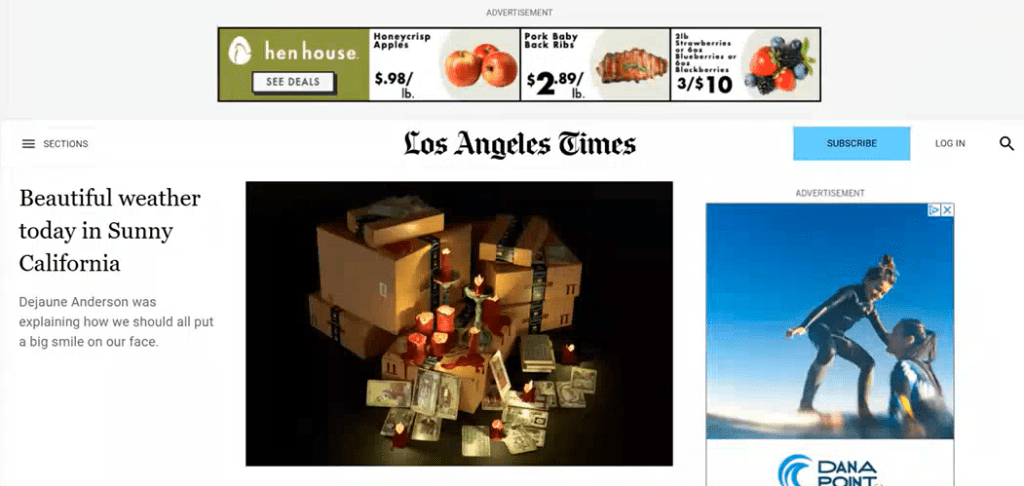
In the example above, the consumer has shopped at a Hen House location. The prices in the promotion are specific to the Hen House location where that consumer typically shops. Swiftly operates in the first-party cookie list identity space, Turner said.
“So we’re not cookie-ing users to try to track and target users,” Turner told Digital Commerce 360. “I’m actually getting explicit opt-in identities with a first-party login with the user’s email address, phone number into these retailer apps. And when we go and we target users, we’re actually able to target them using a data clean room, target these same shoppers off-platform in a privacy-compliant and cookie-less way.”
A data clean room “leverages the hash of your email address, so you’re not sharing any of the raw data, and it couldn’t be used to reverse-engineer-your email address,” he explained. It matches two people “without ever having to exchange any personally identifiable information,” he added.
He compared the process to a digital version of circular print ads. A local grocery store can send printed coupons and pricing — often on newsprint paper — to consumers and potential consumers near it. But because many shoppers are more inclined to check prices on their phones and computers than go through traditionally mailed circulars, companies like UNFI and Swiftly use retail media advertising capabilities to reach potential customers.
“If I just show you an ad and you’re out on the internet and it just says, well, hey, apples are $0.98 a pound, I don’t know where to go,” Turner said. “I don’t know where to buy it. I’m gonna probably just ignore that ad ’cause it’s not gonna register with me. But if it’s the retailer that you go to every week that’s branded that ad and it’s like, hey, these are the deals at that retailer, well, guess what? We’re seeing very, very high average return on ad spend for these ads.”
2. Product-based promotions
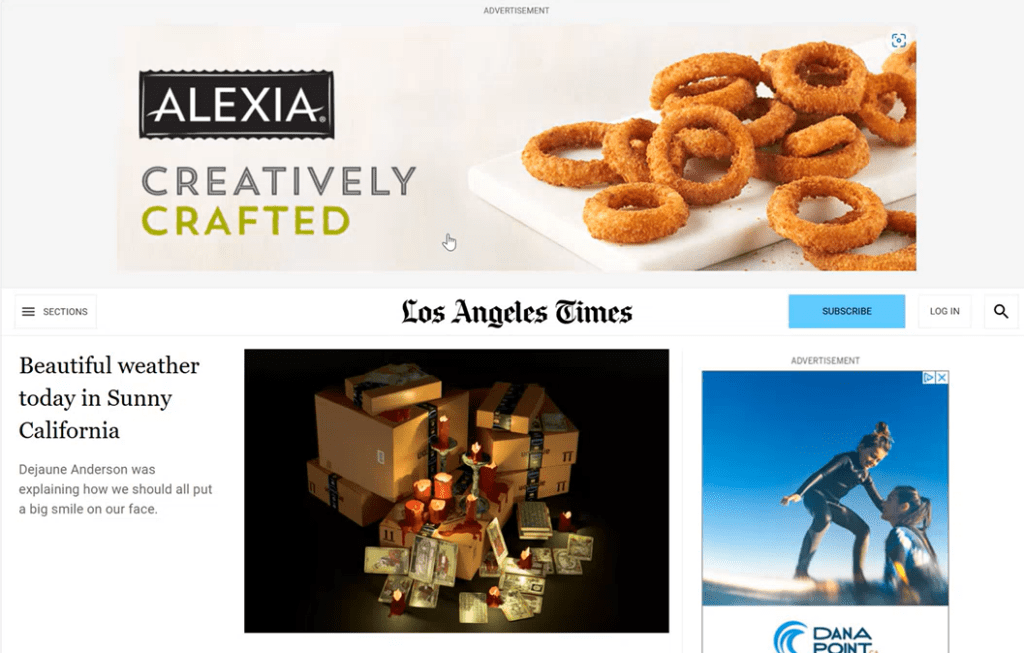
Another Swiftly-powered retail media ad highlights a specific product, as opposed to a pricing promotion.
Turner also showed Digital Commerce 360 a different use case for personalized retail media advertising. In the image above, the retail media ad shows Alexia-brand onion rings. Clicking on the ad takes users to a recipe page featuring the product.
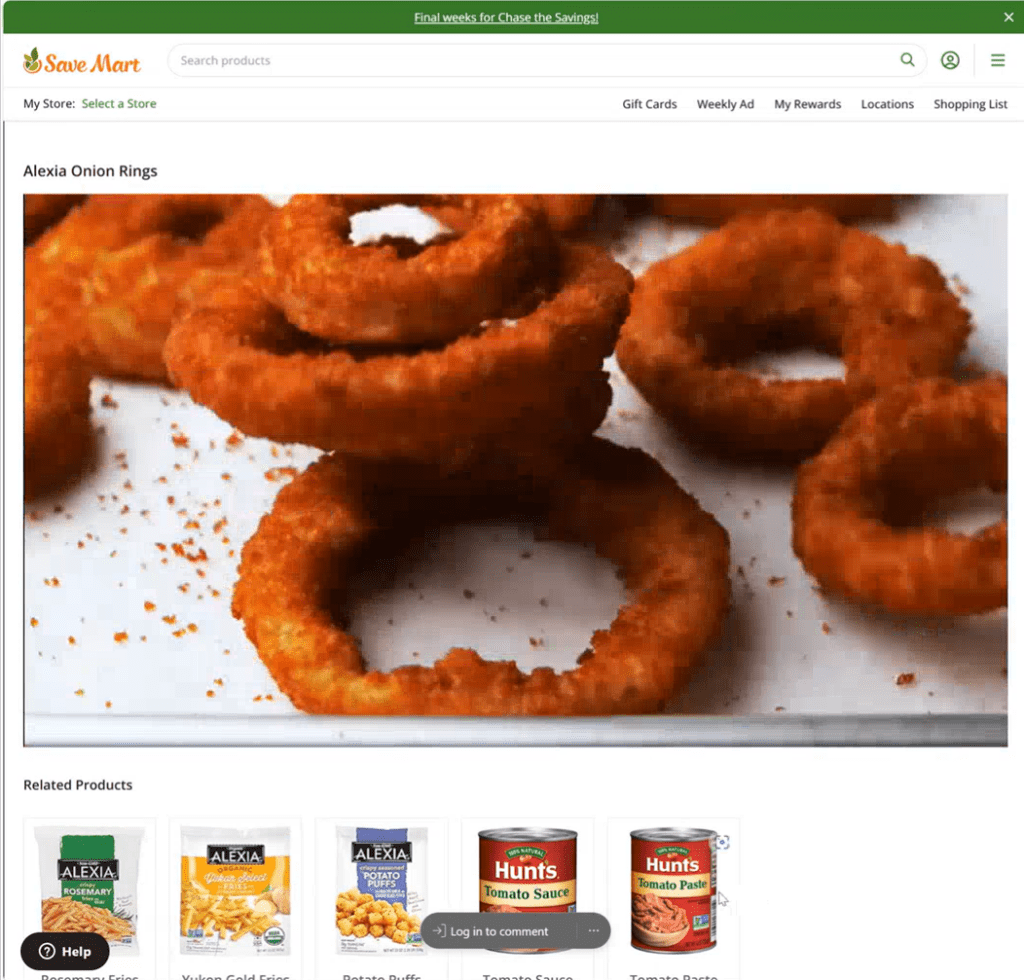
Clicking through the Alexia onion ring ad takes online shoppers to a page that promotes a recipe featuring the product, as well as what other ingredients a shopper should purchase to make the recipe as shown.
“I’ve got all the products featured right below that, so it makes it super easy for me to add these to my shopping list or to add it to an ecommerce cart and actually go and buy the product,” Turned said. “You’ve got a pretty good, complete story there.”
3. In-app mobile advertising
Swiftly powers the retail media technology for St. Louis-based grocery retailer Dierbergs’ mobile app. Upon opening the app, a user might see an ad to make s’mores.
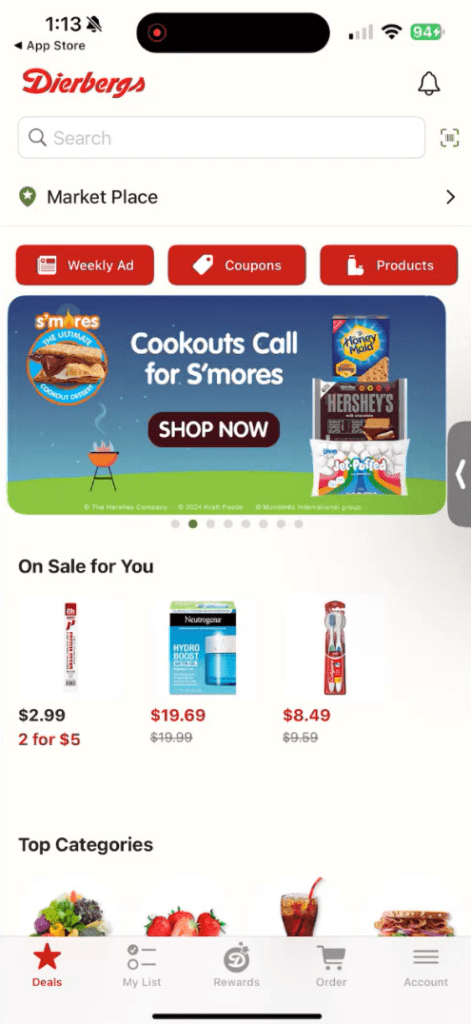
An ad on the Swiftly-powered Dierbergs mobile app calls users to make s’mores.
When a user clicks the ad, she is taken to a list of products that an advertiser or advertisers promote to complete the recipe in their call to action. In this case, those would be Hershey’s, Kraft and Mondelez.
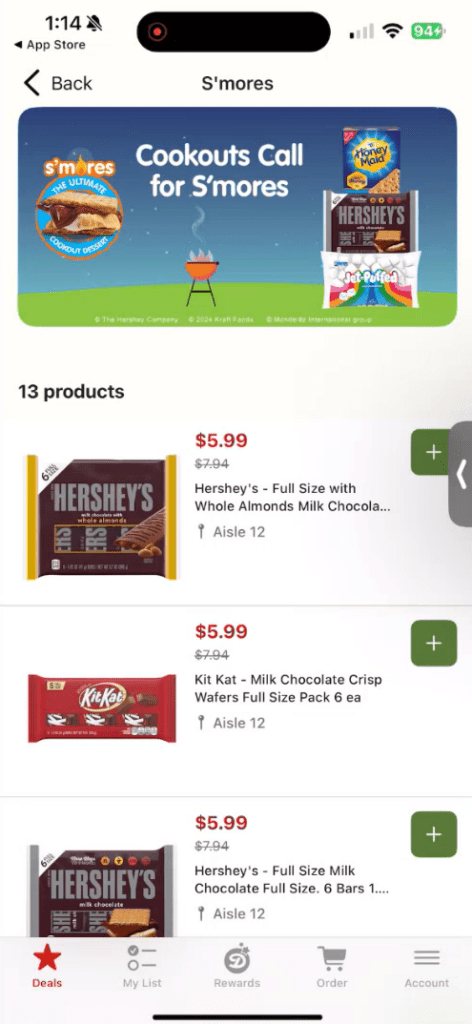
The Dierbergs app shows which products to buy to make s’mores, based on the companies advertising.
The app then displays the products with pricing based on the location where the user shops. Additionally, it shows which aisles a user can go to in the store to find the products. Both of those details update automatically, as the retailer’s app is linked to its point-of-sale system.
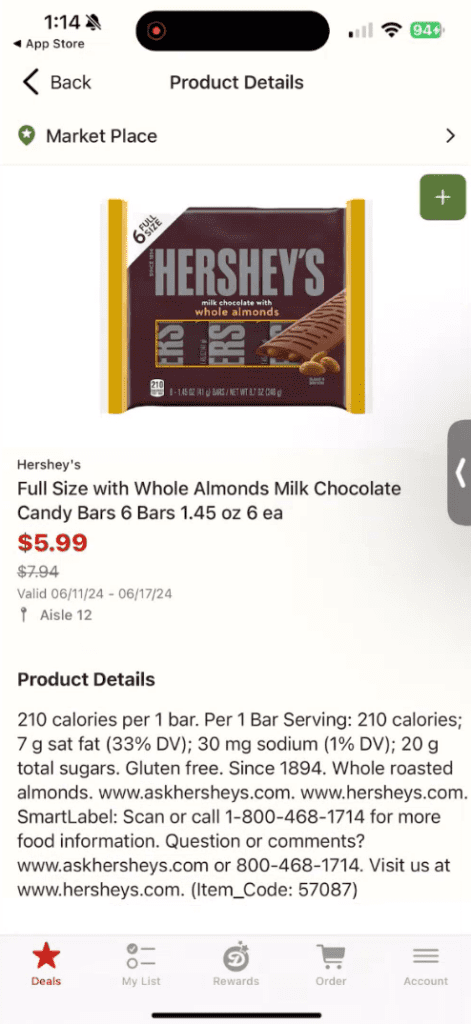
The product detail page shows an image, pricing and the duration of the promotion. It also shows where to find the product in the user’s preferred store location.
The user can add the product to an ecommerce cart or to a list for physical shopping by clicking the plus symbol in green on the product detail page.
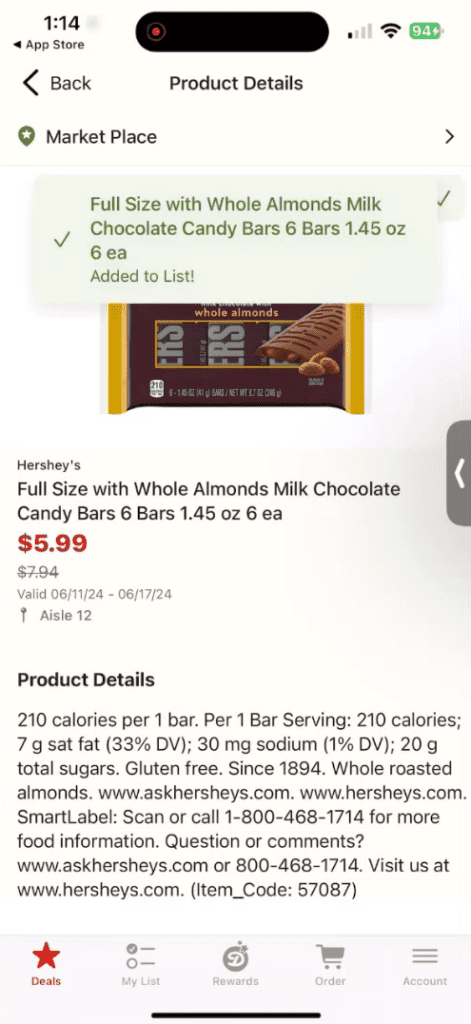
Dierbergs app users can add products to their shopping lists or digital carts.
The app sorts the products that consumers add to their lists to display by aisle, making in-store shopping more efficient.
Impact on regional and independents retailers
Retail media advertising is a critical capability for smaller retailers, Martin and Turner both told Digital Commerce 360. Any retailer working with UNFI or brand that sells to those retailers can participate in the UNFI Media Network, Martin said.
That includes some of the largest consumer packaged goods companies (CPGs), he said. Those CPGs typically come in with a checklist of expectations. That’s because they have the resources to understand what goes into advertising at that scale, he added.
“The flip side is we also have a universe of suppliers who don’t have that infrastructure,” Martin said. “They are small, natural organic suppliers. In many cases, they may be all the way down to still doing stuff in the garage of their home to maybe having one or two production facilities and able to supply to just a few.
“Well, they’re not the ones that can go to Walmart and get on the media platform because one, if Walmart turns it on, they’re not going to have the scale to keep up with it. But two, they don’t have the administrative infrastructure to engage. And so we’ve tried to make that very easy for that type of supplier by you can just simply go on our website and with a few clicks, sign up, put your brand on it.”
Do you rank in our databases?
Submit your data and we’ll see where you fit in our next ranking update.
Sign up
Stay on top of the latest developments in the online retail industry. Sign up for a complimentary subscription to Digital Commerce 360 Retail News. Follow us on LinkedIn, Twitter, Facebook and YouTube. Be the first to know when Digital Commerce 360 publishes news content.
Favorite